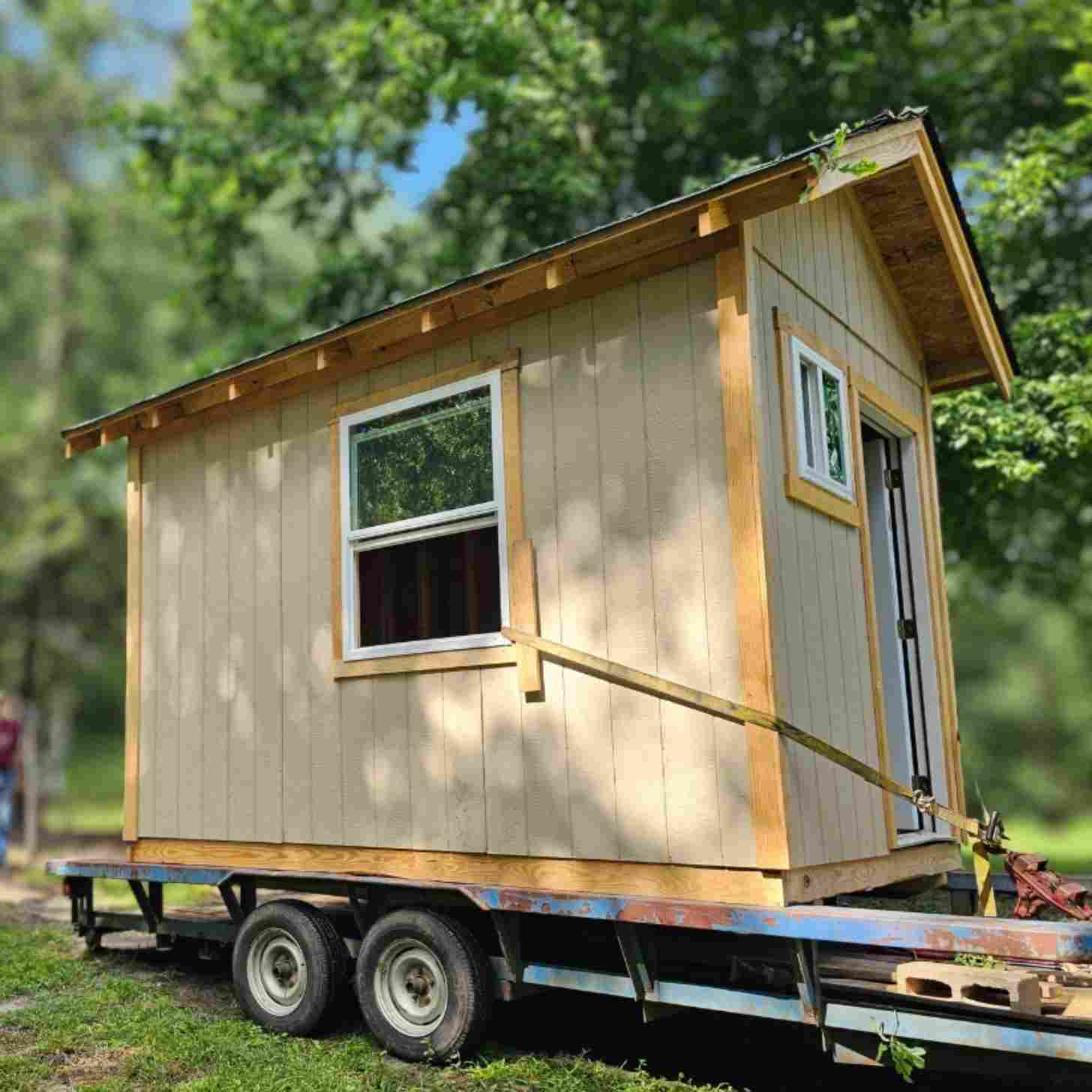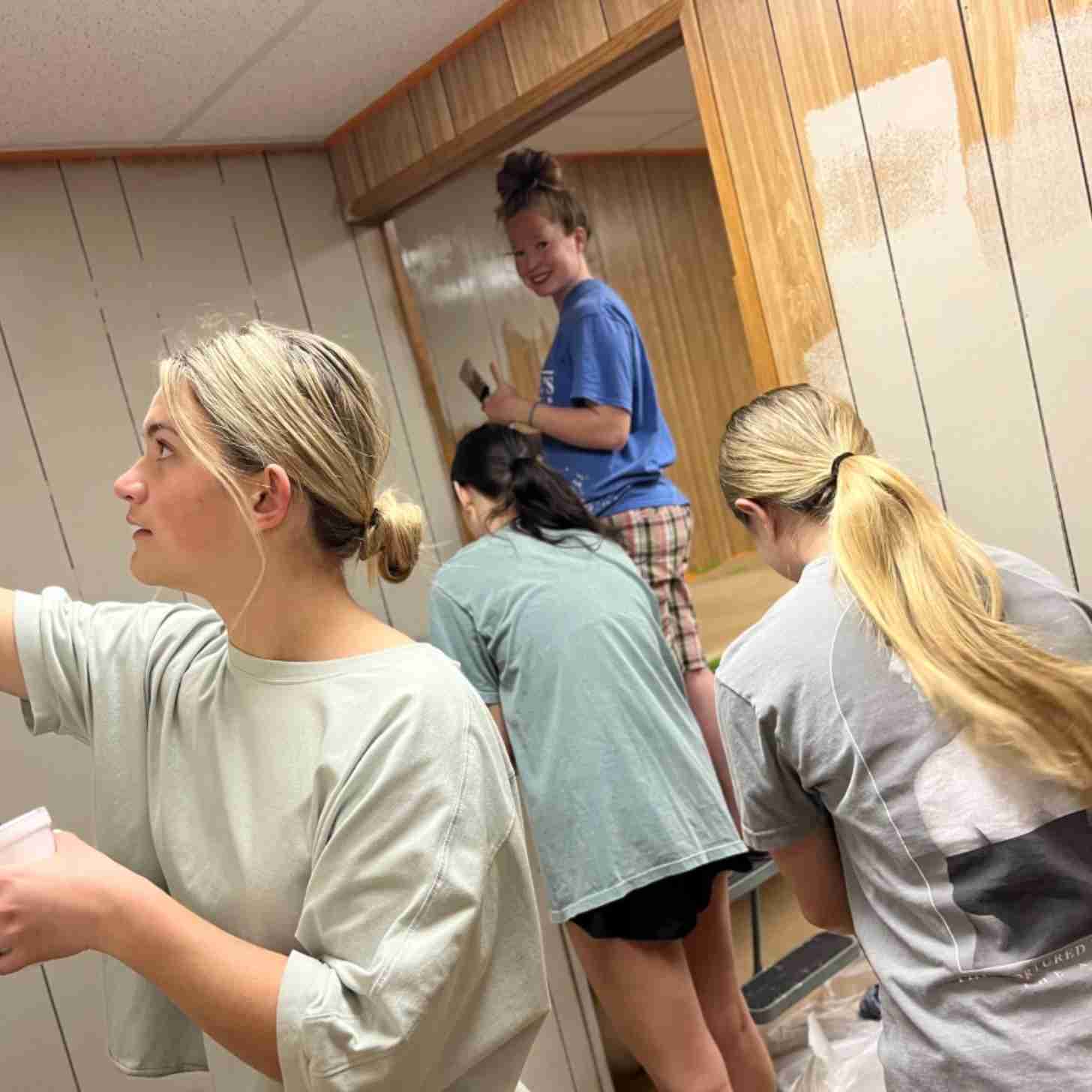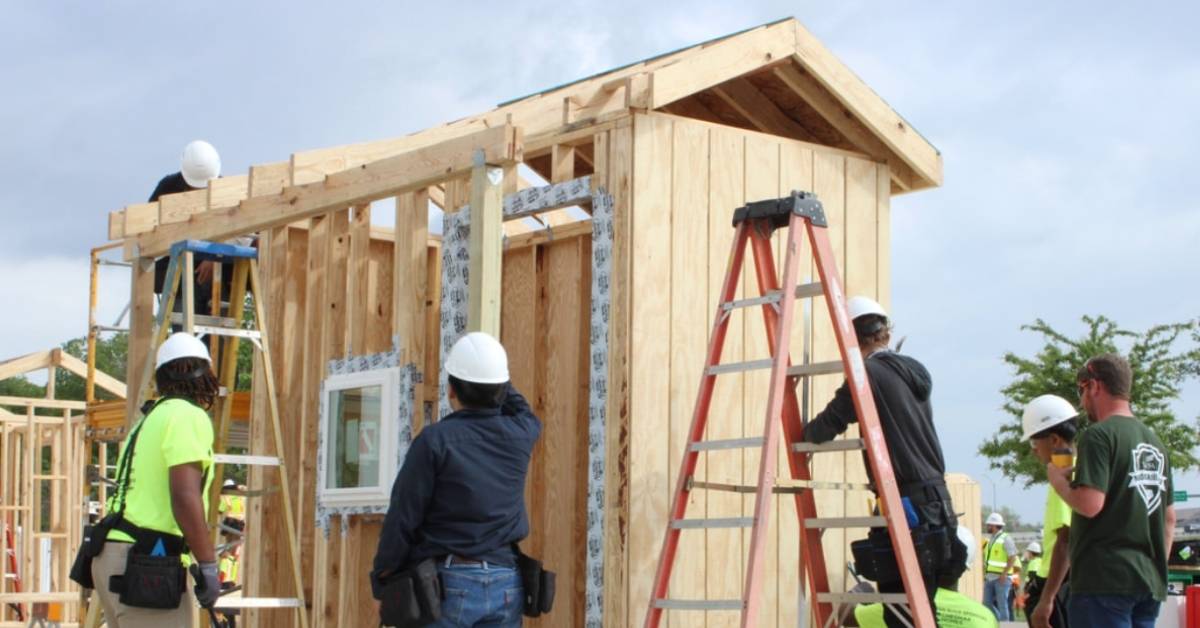Every year, the Construction Industry Education Foundation hosts tiny home building competitions throughout Texas, Indiana, California, and Oregon.
The challenge? Task high schoolers with designing and building a 96+ square foot structure that meets industry standards — in just 2 days.
In March, more than 185 students, on 13 teams, traveled from across Texas to attend the Design Build Competition in Houston.
“High school students arrived ready to build, problem-solve, and work as a team in a real-world jobsite environment at Lone Star College — North Harris — and they delivered,” The CIE Foundation wrote on Instagram this past April.
“These students didn’t just learn about careers in construction — they experienced them.”
Of the 13 teams, students from Nacogdoches High School’s Career Technical Education program stood out in the competition.
Although they placed second in the contest, falling short of the top prize, they elected to do something remarkable: turn their entry into a home in real life.
“The students and the teachers decided to take it a step further and move it forward for a better purpose,” Shawn Lucena, the director of Nacogdoches ISD’s CTE program, told local news outlet KTRE.

And Lucena knew exactly where to turn: The Village Nac.
The mental health rehabilitation center, which is based in Nacogdoches, Texas, serves people experiencing homelessness and chronic mental health issues through temporary housing initiatives and mentorship programs.
The center itself is faith-based, but the nonprofit doesn’t require prospective residents to be religious themselves. Instead, they simply ask them “to be a cooperative member of the Village Nac community” by participating in at least one program with their neighbors.
Their extensive catalogue of “micro-enterprises” includes gardening, pottery-making, sheepfarming, beekeeping, piano playing, and more.
The co-founders of The Village Nac, Laura Culpepper and Constance Engelking, said that the students’ donation would have a long-lasting impact on the community members they served.
“When they leave or move on or even step up to a larger home, there’s a room for the next person to come in,” Engelking said. “So it’s just a perpetual gift.”
“There will be many, many, many people over the years to live in that house,” she added.
Lucena said that the ultimate goal of the program was to help teach students to give back. By donating their hand-crafted tiny home, his students were able to see their work as more than just “something to turn in for a grade.”
“[They] realize that, ‘Wow, I am doing something that’s going to be left behind for someone else to use,’ and you can see it in their eyes that it’s very satisfying once they realize that,” Lucena said.

You may also like: High school students build tiny house village for homeless veterans states away: 'A great civics lesson'
Header image via CIE Foundation



